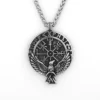Are you interested in the history of Welsh castles? Welsh castles have a rich and complex history that spans centuries. From the pre-Norman period to the present day, Welsh castles have played a significant role in the country’s defence, governance, and cultural heritage. In this article, we will explore the history of Welsh castles in detail, including their origins, evolution, decline, and preservation.
History of Welsh Castles
- Welsh castles were built before and after the Norman Conquest of Wales, and played a significant role in Welsh history as centers of power and defense.
- The castles were built during different periods and had unique features, and efforts have been made to preserve and restore them.
Welsh castles are fortified structures that were built for defensive purposes. They are a testament to the strength and resilience of the Welsh people who built them, and they continue to attract millions of visitors to Wales every year. The first Welsh castles were built in the pre-Norman period, but it was the Normans who introduced advanced castle building techniques to Wales. Welsh castles were built in various styles and designs, and they served different purposes at different times in history.

Pre-Norman Castles in Wales
Before the arrival of the Normans, the Welsh built fortified structures known as hillforts. These hillforts were built on high ground and were designed to provide a secure defensive position. They were often surrounded by ditches and ramparts, and some even had stone walls. Examples of pre-Norman Welsh castles include Dinas Powys, Castell y Bere, and Dolwyddelan Castle.
Norman Conquest of Wales
The Norman conquest of Wales began in the late 11th century and was a significant turning point in Welsh castle building history. The Normans introduced advanced castle building techniques to Wales, including the use of stone and the construction of concentric castles. Some of the first castles built by the Normans in Wales include Chepstow Castle, Cardiff Castle, and Beaumaris Castle.

Welsh Castle Building in the 12th Century
The 12th century saw a Welsh castle building boom, with the Welsh building their own castles to defend against the Normans. Welsh castles were often built on high ground, and they had unique designs and features. Caerphilly Castle, Conwy Castle, and Harlech Castle are examples of Welsh castles built during this period.

Edwardian Castles in Wales
In the late 13th century, King Edward I of England launched a massive castle building campaign in Wales. He built a series of castles, including Caernarfon Castle, Conwy Castle, and Harlech Castle, to subjugate the Welsh and establish English control over the country. These castles were not only military fortifications, but they also served as centers of political power and administration.
You Might Like These
-
Born of Fire Made of Legend T-Shirt – Welsh Dragon Design
Price range: £19.10 through £35.86 -
Cymru Welsh Dragon Minimalist T-Shirt – Gildan 5000
Price range: £19.10 through £32.90 -
The Red Dragon Rises T-Shirt – Welsh Dragon Shirt
Price range: £19.50 through £27.99 -
Believe in Dragons T-Shirt
Price range: £19.10 through £35.86
Welsh Castles in the Middle Ages
During the Middle Ages, Welsh castles played a crucial role in the country’s defense and governance. They were often built by Welsh princes and were used as strongholds to protect against English invasion. Raglan Castle, Powis Castle, and Criccieth Castle are examples of Welsh castles built during this period.
Welsh Castles in the Early Modern Period
During the early modern period, Welsh castle building declined, and many castles were converted into residences or abandoned. The influence of the Renaissance can be seen in the changes in castle design during this period. Welsh castles were used during the Tudor and Stuart periods, including the Civil War.
| Type of Welsh Castle | Characteristics |
|---|---|
| Hillforts | Fortified structures built on high ground with ditches and ramparts. |
| Norman Castles | Advanced castle building techniques with the use of stone and concentric castles. |
| Welsh Castles in the 12th Century | Built by the Welsh, often on high ground with unique designs and features. |
| Edwardian Castles | Built by King Edward I of England for military fortification and centers of political power and administration. |
| Castles in the Middle Ages | Built by Welsh princes as strongholds against English invasion. |
| Early Modern Castles | Decline in castle building with the influence of the Renaissance seen in changes in castle design. |
Decline of Welsh Castles
The decline of Welsh castles can be attributed to several factors, including political stability and technological advancements. As warfare became more advanced, castles became less effective as defensive structures. Many castles were abandoned or converted into residences, and they lost their military significance.
Preservation and Restoration of Welsh Castles
Today, many Welsh castles have been restored and preserved, thanks to the efforts of organisations like Cadw. However, preserving and restoring these historical sites is a challenging task that requires significant funding and maintenance. Nevertheless, these efforts are crucial in maintaining the cultural heritage and historical significance of Welsh castles.
A Personal Account of Visiting Caernarfon Castle
During my trip to Wales, I had the opportunity to visit Caernarfon Castle, which was built by King Edward I in the 13th century. As I walked through the castle gates, I was struck by the imposing walls and the grandeur of the structure.
As I explored the castle, I learned about its military and political significance, as well as its role in Welsh history. I was particularly interested in the Welsh rebellion led by Owain Glyndwr in the early 15th century, which saw the castle besieged by Welsh forces.
One of the most impressive features of the castle was the Eagle Tower, which was used as a royal residence by King Edward I. I climbed to the top of the tower and was rewarded with a stunning view of the surrounding countryside.
As I left the castle, I couldn’t help but reflect on the history and significance of Welsh castles. They are not only impressive feats of engineering, but also symbols of Welsh identity and resilience in the face of English domination.

Cultural and Social Significance
Welsh castles are not only significant for their military and architectural importance, but they also hold cultural and social significance. Welsh castles have become symbols of Welsh identity and pride, and they are often used to promote tourism and celebrate Welsh history and culture. Many castles host events and festivals throughout the year to showcase Welsh traditions and heritage.
Conclusion
Welsh castles are an integral part of the country’s history and culture. They are a testament to the strength and resilience of the Welsh people, and they continue to attract millions of visitors to Wales every year. The history of Welsh castles is a fascinating one, and their evolution and significance are deeply rooted in Welsh identity and tourism. While there are still many questions to be answered about the history of Welsh castles, their significance in Welsh history cannot be denied.
Insider Tip: When visiting Welsh castles, be sure to take advantage of guided tours to learn more about their history and significance. To experience the full cultural and social significance of Welsh castles, plan your visit around one of the many festivals and events held at these historical sites.
Q & A
Q.Who built the first Welsh castle?
A.The Normans built the first Welsh castle in 1066.
Q.What was the purpose of Welsh castles?
A.Welsh castles were built for defense and control.
Q.How many Welsh castles still exist today?
A.There are over 600 Welsh castles, but only a few are intact.
Q.Who inhabited Welsh castles during medieval times?
A.Welsh castles were inhabited by lords and their families.
Q.What is the most famous Welsh castle?
A.Caernarfon Castle is the most famous Welsh castle.
Q.Isn’t learning about castles boring?
A.Not at all! The history of Welsh castles is fascinating and full of drama.









